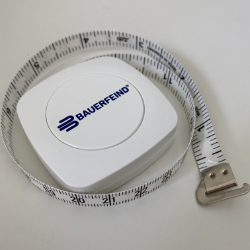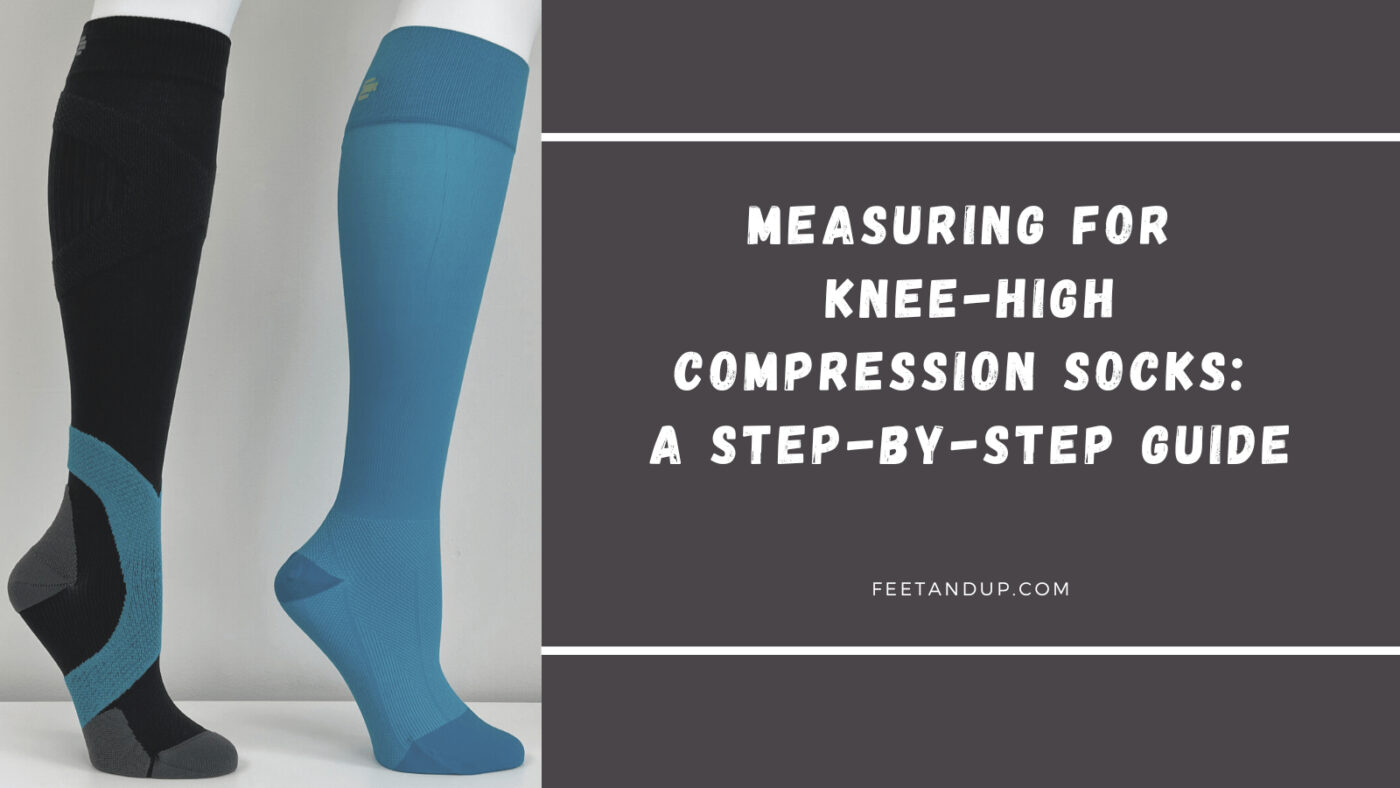Measuring for Knee-High Compression Socks: A Step-by-Step Guide
Compression socks and compression stockings have become a popular choice among athletes, travelers, and those with medical conditions that affect circulation. These socks provide graduated compression, which helps to improve blood flow from the legs to the heart, and reduce swelling. To achieve the maximum benefits of compression socks, it is important to get the right fit.
Compression stocking measurements are best taken by an experienced certified fitter, but can also be done by yourself at home. In this blog post, we will explain the proper way to measure for knee-high compression socks to ensure you get the perfect fit.
Tip: To make sure you get the right size, it’s best to measure your legs first thing in the morning. If you measure your legs later in the day, they might be swollen and the measurements won’t be accurate.
What you will need:

A cloth tape measure (best). Also called Sewing Tape Measure or Tailor’s Tape Measure.
If you don’t have a cloth tape measure, you can also use a piece of ribbon or string. Make little marks on the ribbon when you take your measurement. Then, lay the ribbon down on a flat surface and measure it with a metal measuring tape or ruler. This method will take a little more time and care because of the additional steps. You may also lose some accuracy in the measurement.
Tip: Take your measurements while sitting on a chair, with your foot flat on the floor and your knees bent about 90 degrees. You might need help from someone if it’s hard for you to lean forward to take your measurements.
Time needed: 5 minutes
- Measure Your Ankle (cB)
The first step in measuring for compression socks is to determine the size of your ankle. This measurement is taken at the narrowest point of the ankle, just above the ankle bones (the bony projections on each side of your ankle, also called malleolli).
Use the measuring tape to measure the circumference of your ankle. Remember to measure both ankles. - Measure Your Calf (cC)
The next step is to measure the calf. This measurement is taken at the widest point of the calf.
Use the measuring tape to measure the circumference of your calf. Remember to measure both calves. - Measure Your Leg Length (lD)
The final step in measuring for compression socks is to determine the length of your leg. This measurement is taken from the floor to slightly below the bend in the back of the knee.
Use the measuring tape to measure the length of your leg. Remember to measure both legs. - Find The Right Size
Find your measurements on the size chart. Note: For Bauerfeind compression socks, different styles of compression socks (like Business, Merino or Performance) will use different size charts – it is important that you use the correct size chart. The two circumference measurements (cB and cC) will give you a size (ex. small, small plus, medium, etc). The length measurement (lD) will give you the length (short or long).
Tips for a Perfect Fit
- Make sure to measure both legs. For most people, the measurements will be the same. It is important to check the sizes of both legs, in case they are different sizes.
- Measurements should not be taken too snugly or loosely. The measuring tape should lay flat on the skin without pressing into it.
- Avoid sizing up or down – this decreases the effectiveness of the compression, as well as the fit. You may notice that the socks slide down or cut into your ankles.
- The compression pressure is just as important as fit. It is shown in millimetres of Mercury (mmHg), a unit of measurement used to express pressure. The higher the mmHg, the stronger the compression. Medical grade compression stockings begin at a pressure of 20-30mmHg. If you are unsure about your compression pressure, it is best to discuss with your physician or a health care professional.
- It’s important to wear your compression socks at the same time of day as when you measured your legs. If you measured your legs in the morning, put on your compression socks in the morning too. That’s because compression socks help to reduce swelling in the legs, and it’s best to wear them when your legs are not swollen yet.
- If your measurements do not fit into the size chart (example: your ankle circumference is in the “small” range, but your calf is in the “large” range), it is best to discuss with a certified fitter before choosing a size.
Bauerfeind Custom Made-To-Measure Compression Socks
- Certain styles of Bauerfeind compression socks can be made just for you, with your own measurements.
- They are made in Germany using the same high quality fabric and materials as the compression socks that are already made.
- Best solution for patients who cannot be given an optimal fit with standard sizes.
- If you have legs that are different sizes, or if your feet are bigger or smaller than most people’s, custom-made socks might work best for you. They can be made to fit your legs and feet perfectly.
- To ensure the best results, all custom made-to-measure compression socks must be measured by one of our experienced certified fitters.
Confused about the size charts? Contact us with your measurements and we will help you to find the correct size for the correct product.
More Tips for Bauerfeind Products:
+ Top 5 Do’s and Don’ts for Compression Stockings
+ How to Clean Your Bauerfeind Compression Stockings and Compression Socks

